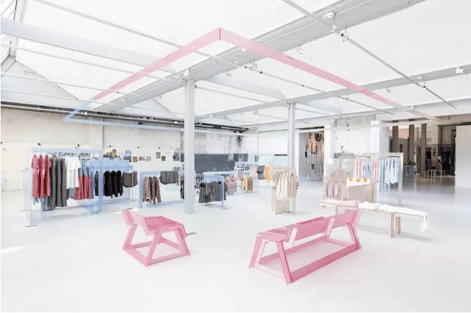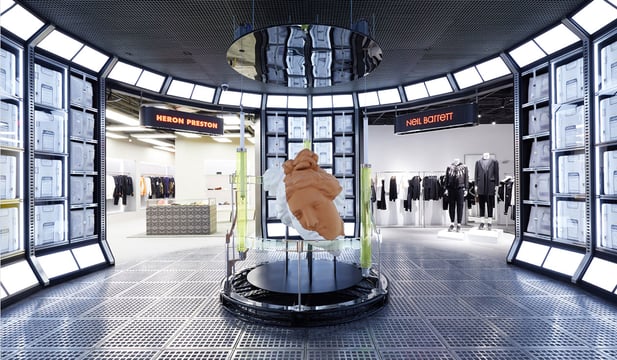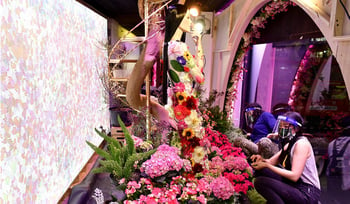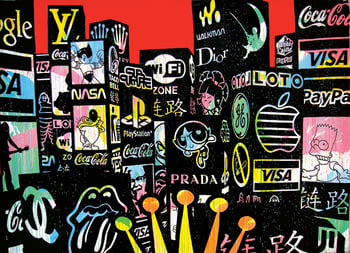The power of Storytelling in Visual Merchandising

The power of Storytelling in Visual Merchandising
We’re living – and shopping – in the new customer experience economy.
From Apple’s Town Square to Nordstrom’s merchandise-less store, the very idea of what a store is has changed. It’s morphed from a place where people come to buy to a place where people come to discover.
While some retailers are engaged in price, delivery, or customer reward wars, this type of competition inevitably creates a division between big names such as Amazon and smaller retailers that simply cannot compete.
Instead of fighting to the retail death, a better business model would be to forge strong bonds with customers. After all, feeling connected to a particular brand or retailer makes it difficult to be swayed by a single offer from one of their competitors.
Whether it’s through a great shopping experience or a personal approach, if your favorite brand is offering you more than just products on a shelf, you’re going to be more loyal to them.
This is where visual storytelling excels.
Why Visual Storytelling?
In the current digital age, visuals matter. In fact:
- Attention spans are notoriously shrinking.
- People get the sense of a visual scene in less than 1/10 of a second.
- 65 per cent of the world’s population are visual learners.
- Visuals increase message retention by 42 per cent.
Visual storytelling is the cornerstone of advertising, but the same is true for visual merchandising. Effective visuals are a strategic asset.
Today’s consumer no longer simply wants to buy – they’re looking for a rewarding shopping experience, made of emotions – of stories. Stories make you feel things. They help convey information and help people retain information better.
Storytelling is a great way of conveying what your brand is about. It helps create a value proposition, a point of difference, and connecting products to a brand’s mission. Additionally, good stories are worth remembering and sharing – a must in our current social landscape.
Using Storytelling in Visual Merchandising

The human mind craves meaning. It even goes so far as to create – even invent – connections. What’s more, if the mind cannot create an orderly narrative from incoming information, it tends to ignore it. If your merchandising is styled haphazardly, potential customer’s will not understand and, ultimately, will not buy.
As such, selecting new product and making sure it’s in the right store locations is a very small part of a merchandiser’s responsibilities. The most important part is to present the merchandise in visually and imaginative ways that it engages the customer and compels them to buy.
Great merchandising should produce seamlessly clear storytelling – through aesthetic sensibility and creativity. Merchandisers themselves must be connoisseurs of lighting, layouts, window dressing, and advertising graphics.
Merchandisers must become master storytellers – creating a world that customers can step into. They must choose the right decor, products, and branding to design and curate the perfect exhibition showcase concept – expertly telling stories with merchandise that connects with the needs, desires, and the imagination of customers.
Getting Started with Visual Storytelling
The first step of storytelling is identifying what your brand’s story is. Think about your mission as a company – could this message be what you want to convey? What is unique about your products or product range? Whether it’s an interesting heritage or a how you use tech, find what sets you apart.
Remember that the design must speak to the customer’s imagination: tell customers what your product will do for them, how it will help them, how it can enhance their life. Make your customers part of your story.
Once you know the why and how then you can experiment with:
- Tell the story with merchandise. Have your story drive the assortment rather than letting the assortment lead.
- Curate selections. Individual products become an element of the overarching story.
- Be imaginative with fixtures. Use unusual textures and materials to keep your vision fluid.
As visual merchandising becomes less of an option and more of a necessity, retailers are beginning to see the benefits of storytelling. But if a retailer’s story isn’t clearly communicated through merchandise, no amount of clever promotions will help you sell.
Follow IWD on Facebook, LinkedIn and Instagram or subscribe to our newsletter.
MORE ARTICLES BY THIS AUTHOR

Maxine



